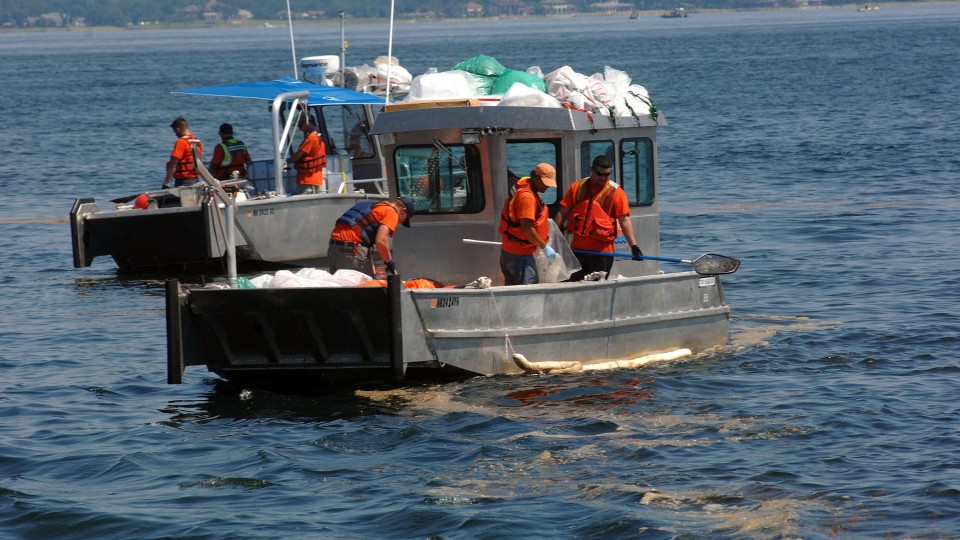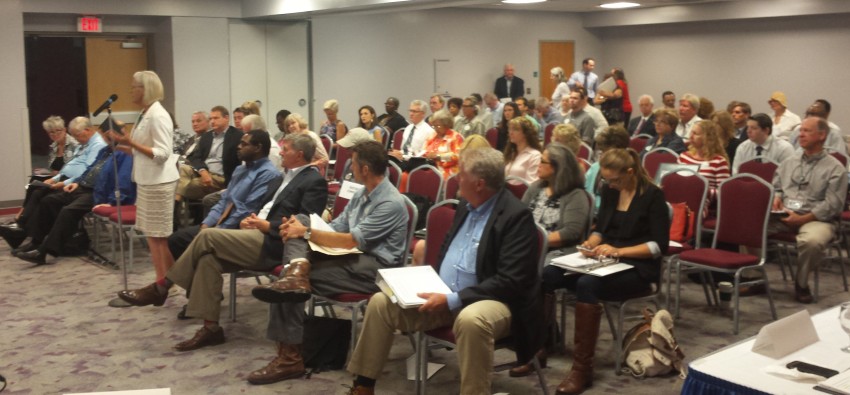Lawmakers delve into BP money
- October 21, 2015
- / Margie Menzel
- / community-dashboard

BP oil spill skimmers. Photo credit University of West Florida
TALLAHASSEE — With billions of dollars coming to Florida in reparation for the Deepwater Horizon oil spill, a Senate panel Tuesday tried to get a better feel for how the money will be spent.
Drew Bartlett, deputy secretary for ecosystem restoration at the Florida Department of Environmental Protection, told members of the Senate Agriculture Committee that the money will flow through several channels.
BP related funding will make a huge economic impact on the Pensacola metro area. The spill itself hurt the region's multimillion dollar tourism industry beginning in 2010. The jobs that are related to that industry felt the pinch for months afterward.
Because tourism is such an important part of the area's economy, bed taxes are one of the metrics included in the Studer Community Institute's metro dashboard. The 16 metrics, researched in consultation with the University of West Florida, provide an at-a-glance look at the Escambia and Santa Rosa area's educational, economic and social well-being.
The 2010 spill in the Gulf of Mexico directly damaged the state's tourism and fishing industries as well as its environment, but also had indirect effects as far away as the Florida Keys.

Pensacola area residents have been participating in the public input aspect of the RESTORE Act for months. Photo credit: Carlton Proctor.
That's partly why senators were interested in one of the buckets of money Bartlett described — $364 million that Florida counties will divide under what is known as the federal RESTORE Act. Seventy-five percent of the money, or $273 million, goes to the eight hardest-hit counties — Escambia, Okaloosa, Bay, Walton, Santa Rosa, Franklin, Gulf and Wakulla.
The other 25 percent, or $91 million, goes to 15 counties, ranging from Taylor to Monroe, along the coast.
"The environmental damages were largely seen in the Panhandle area," Bartlett said. "But when you get to recreation and economic damages, during that time when the newscasts were showing the oil spill … a lot of vacations were canceled. We saw a lot of loss of economic revenue in counties throughout the Gulf."
"Was it fear, or actual economic damage to those counties?" asked Sen. Eleanor Sobel, D-Hollywood.
"In the southern counties, it was fear," he replied.
Committee Chairman Bill Montford, D-Tallahassee, asked whether any of the money was earmarked for county commissions to make their own decisions about projects to fund.
"Who blesses these decisions?" he asked.
Under the RESTORE Act, the U.S. Department of the Treasury has a direct relationship with the coastal counties, said Mimi Drew, a Florida trustee for the National Resource Damage Assessment and a representative to what is known as the RESTORE Council.
"The coastal counties develop the plan, send it to Treasury," Drew said. "When Treasury is comfortable with the plan, then the funding goes directly to those counties."
Escambia and Santa Rosa counties are in the thick of their planning and public input process for how to handle RESTORE funds. A link to all of the projects submitted for possible RESTORE funding in Escambia is available here.
The deadly explosion aboard the drilling rig owned by BP and operated by Transocean is considered the largest marine oil spill in the history of the industry. It killed 11 people and sent millions of gallons of oil into the Gulf of Mexico, taking months to cap and seal the well.
Florida will collect $680 million from the National Resource Damage Assessment and $356 million from the National Fish and Wildlife Foundation for restoration projects. It will also net at least $676.5 from the RESTORE Act, formally known as the 2012 Resources and Ecosystems Sustainability, Tourist Opportunities, and Revived Economies of the Gulf Coast States Act.
Much of the money will be paid over a 15-year period. Both BP and Transocean will contribute to each fund.
Additionally, the state will receive $2 billion for economic damages, which will flow through the Attorney General's Office.
Triumph Gulf Coast Inc., a nonprofit corporation created by the Legislature in 2013, will help the eight Panhandle counties most economically impacted by the spill. It is expected to award 75 percent of the economic-damages money over 30 years for recovery efforts, while the Legislature will distribute the rest.
Under the agreement, Florida will receive an initial payment of $400 million next year, with subsequent disbursements of about $100 million annually through 2033.
What has been paid out by BP and the related companies in connection to the disaster so far?
Editor Shannon Nickinson contributed to this report.

 CivicCon launches with a look at good growth in cities
CivicCon launches with a look at good growth in cities
 Building stronger brains one baby, one parent at a time
Building stronger brains one baby, one parent at a time
 SCI debuts commercial on Early Learning City
SCI debuts commercial on Early Learning City
 Entrecon: World class speakers and an opportunity to sharpen skills
Entrecon: World class speakers and an opportunity to sharpen skills
 PYP Quality of Life survey 2017
PYP Quality of Life survey 2017
 EntreCon Pensacola 2016: A look back
EntreCon Pensacola 2016: A look back
 Leadership tip: getting better employee takeaways
Leadership tip: getting better employee takeaways
 Leadership tip: be interested instead of interesting
Leadership tip: be interested instead of interesting
 Leadership tip: delivering difficult messages
Leadership tip: delivering difficult messages
 Brain Bags boost Arc, Early Childhood Court programs
Brain Bags boost Arc, Early Childhood Court programs